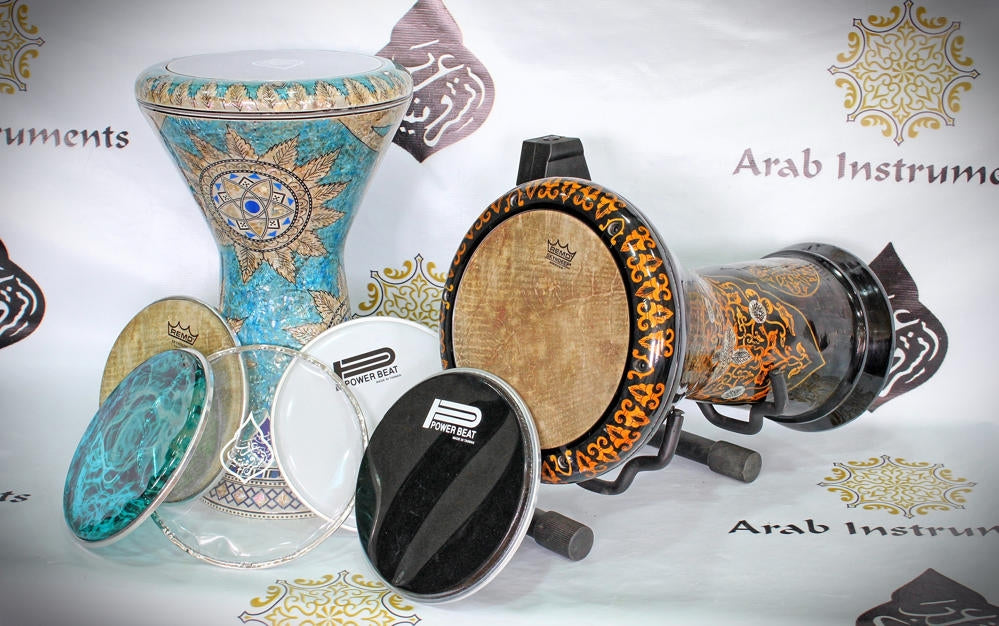
Which Darbuka Skin / Head Will be the Best Choice - Doumbek Skin Full Review
As you all probably know, different players use different types of darbuka skins and there are so many skins out there which produces different sounds.
In this article we will try to explore the different skins for the doumbek / darbuka drums and try to understand which one will be your best choice.
Regular transparent Egyptian skin
Almost 90% of the darbukas which have been made in Egypt comes with this skin. This skin made of plastic and it comes in two thickness: 0.3 millimeter and 0.6 millimeter.
The advantages of the transparent Egyptian skin are: They are very easy to install, when the skin become loose as a result of a lot of drumming sessions, you will always have the option to close a little more the pegs around the ring (in case you didn't close the ring until the end) and stretched the skin even more.
The disadvantages of this skin are: The erosion of this skin is higher than the other skins and players who play a lot with their drums need to replace it more often with a new one. Another issue is that since the plastic is very thin, you can see scratches or any dirt that appears on it very clearly.
Because of this fact, players who bought a new darbuka and got it with the default transparent Egyptian skin, can be disappointed from the skin look but don't you worry about that. Just take a rag with some water and clean it as much as you can, the scratches and dirt will not effect the sound at all. In terms of sound, the transparent Egyptian skin is the most common. It has an open sound and great "Doom" strokes. Many players who like the "Hafla" Event and the Arabic music will prefer it over all the other darbuka skins in the market. It is also the cheapest skin for darbuka.
Transparent skin demonstration
Power Beat skin (black, white or transparent)
Power beat skin for darbuka is one of our favorite skin. This skin made of high quality plastic and it comes with thickness of 0.8 millimeter. The ring around the skin is much more stronger and accurate than the Egyptian transparent skin but less flexible (something that make the installation more complicated)
The advantages of the power beat skin are: It looks amazing on the darbuka. You can play on the darbuka for a long time and it will keep the tuning and the darbuka balanced. You will not need to replace the skin so often and you have three different colors that you can choose.
The disadvantages of the power beat skin are: It is not so simple to install. Many players who don't have installation experience, can torn the skin during the installation process or make a damage to the pegs or the darbuka ring as a result of high pressure on these areas during the process. Tuning the power beat skin also required some knowledge since the skin is over stretched after the installation.
In terms of sound, we do think that the power beat has the perfect sound for darbuka. Because of its thickness (0.8 millimeter) the "Tack" and the "Slap" strokes can be very sharp and the "Doom" stroke will be perfect. The sound of the power beat will be even better after one month of playing and with the right tuning its sounds like the Turkish amazing treble sound. You can tune it also a little bit open and you will get the perfect Arabic Sound.
Power Beat skin demonstration
Remo Fiber Skin – Brown, White
Remo fiber skin is very unique skin. It has also a thickness of 0.8 millimeter and in terms of its structure, it reminds the power beat skin. Most of the players that use Remo fiber skin pick the brown one which has traditional look of Fish Skin graphic. We love this skin since it has a crispy sound and more bass over the power beat skin but not all the darbuka players are open to this sound and we will recommend playing on other darbuka skins before jumping into the Remo fiber skin category. Another feature of this skin is when you move your fingers up and down the skin, you will get another sound that doesn't exist in other skins (some players will think this is a disadvantage).
The advantages of the Remo skin are: It has a unique sound that brings something different to the music. When we tune it on our darbukas, its sounds amazing and with the brown fish graphic the darbuka gets a rich and beautiful look.
The disadvantage of this skin are: For solo darbuka (new generation and innovation) the skin will not always perfectly fit and in several cases after you installed the skin, it will not starched enough for the perfect tuning (On a sombaty plus darbuka it is starched perfectly). Tuning the skin is also not so simple for beginner players.
Remo brown fiber skin is recommended for players who seek for special sound and open "Doom". Its look makes the darbuka unique and attractive on every performance.
P.S
Remo has also blue and red skins but in terms of sound they similar to the power beat skins
Remo skin demonstration
Fish Skin
When we are talking about natural skins, the most common are fish and goat skins. These skins are installed by the maker for a ceramic / clay darbuka and can be stretched only with hitting the skin from the inside of the darbuka (by lamp) or outside by hair dryer or other source of hit.
The advantages of the fish skin are: it has an amazing resonance and higher sound. Darbuka players loves it so much and it can be perfect for recording and world music. Many professional players use it on big stages and performance.
P.S
You must have a professional ceramic darbuka in order to make the best sound from this skin.
The disadvantage of the fish skin are: Since this skin is very thin, it can be torn during the time. The fish skin is hard to find and this is why it cost a lot. In areas when the temperature can be very dry, there is a risk that the skin will be torn.
Here in Arab Instruments we love the fish skin on our ceramic darbuka very much but we will prefer the goat skin in terms of the Arabic sound.
Natural Fish skin demonstration
Goat Skin
When you have a professional ceramic / clay darbuka, the goat skin is our favorite skin.
The advantages of the goat skin are: You can build your ceramic darbuka with a thin and thick skin and by that control the sound perfectly. The goat skin is very strong and the changes it will be torn are very low. It comes with different colors of white / yellow and the darbuka looks absolutely amazing.
The disadvantage of the goat skin are: A beginner player can bought a ceramic darbuka which has low quality of goat skin and this will effect a lot the sound. Not all players fill commutable to play with a lamp inside the drum in order to stretche the skin.
The goat skin is the most common skin on a ceramic / clay darbuka. The goat skin will produce an amazing sound as long you have a professional ceramic darbuka. For beginners we will recommend to start with the traditional aluminum mother of pearl darbuka with the regular transparent skin and not with the goat or the fish skin.
Natural Goat skin demonstration










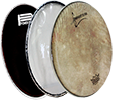






















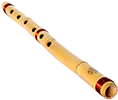




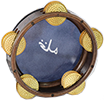

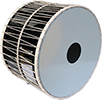
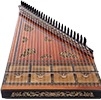
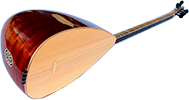
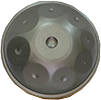
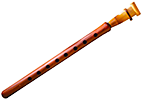








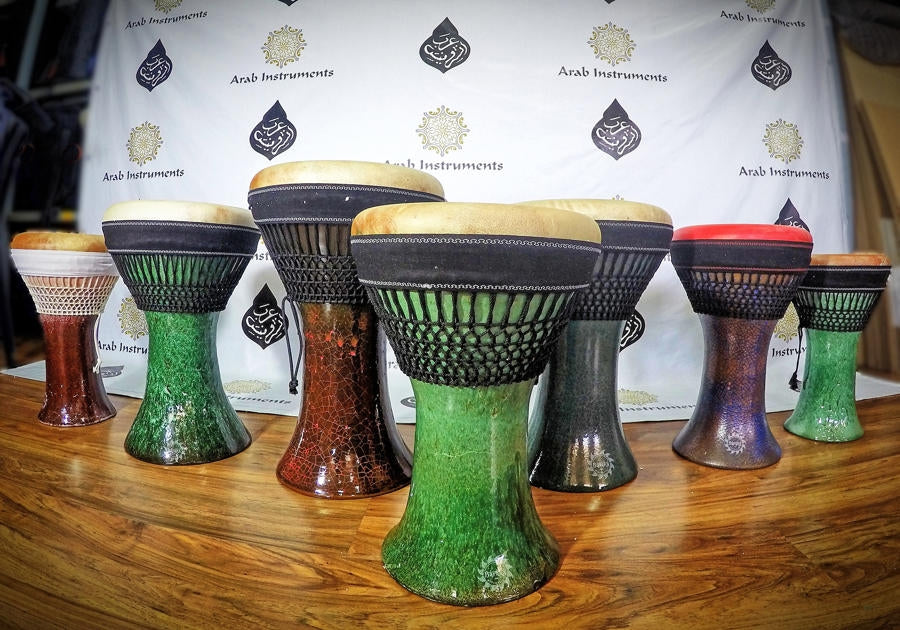
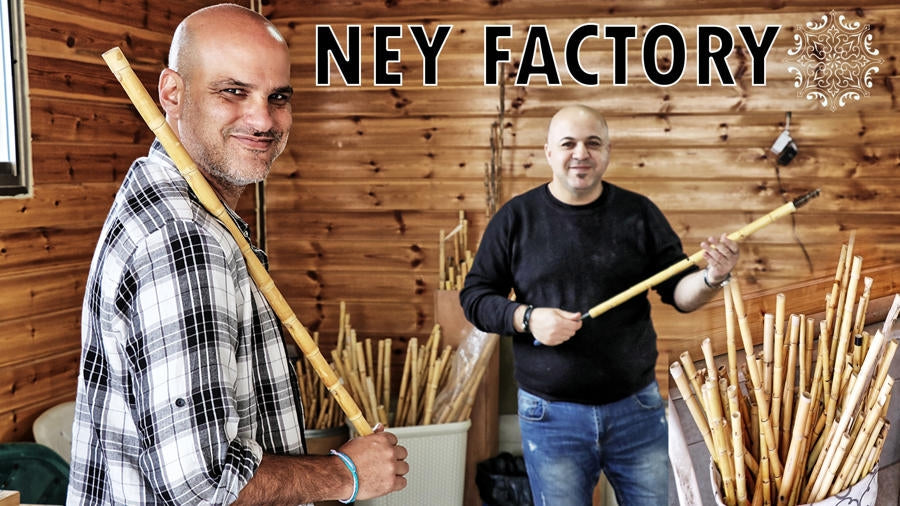
Leave a comment
This site is protected by hCaptcha and the hCaptcha Privacy Policy and Terms of Service apply.